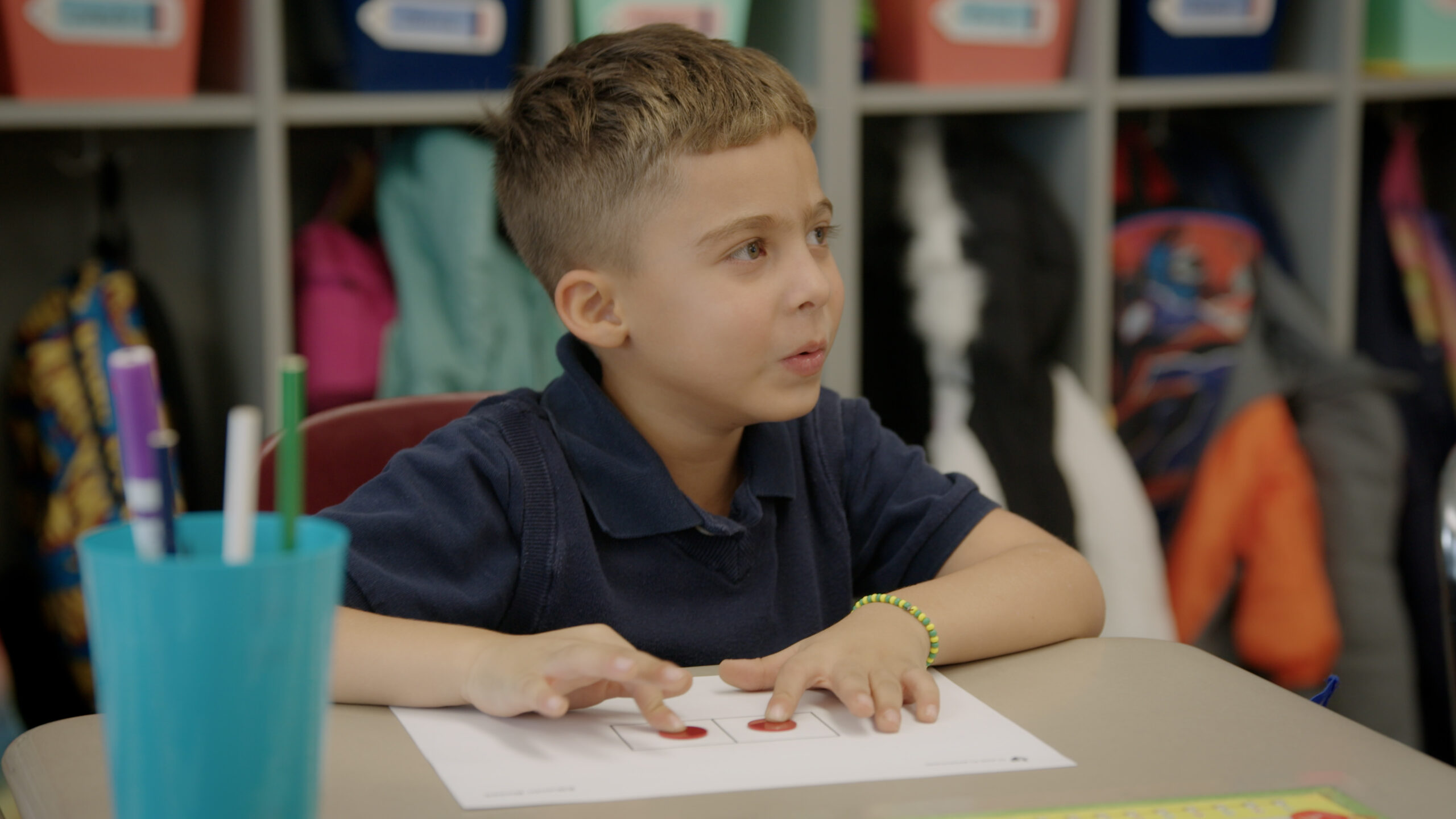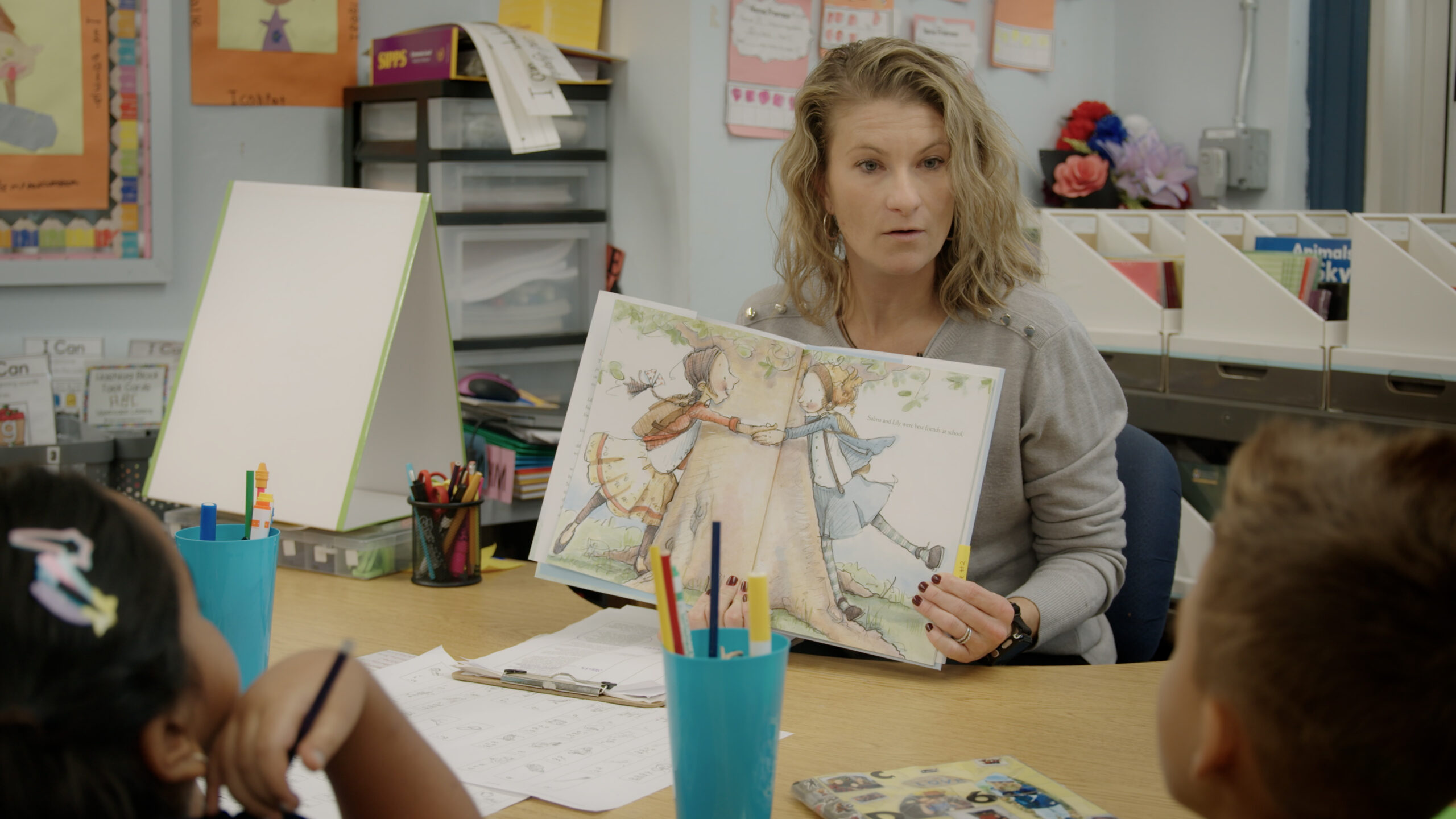Combining Sentences with Conjunctions
Overview
The teacher models how to connect a text to sentence writing to build content knowledge in tandem with other skills, such as understanding sentence structures and syntax. The teacher models using a set of conjunctions to combine sentences with topics connected to a familiar text. The students then practice the skill with partners while the teacher provides support and feedback.
Key Take-aways
•Combining or completing sentences with starters in connection to relevant texts is an opportunity for building content knowledge and writing stamina.
•Multiple skills such as sentence structure, syntax, content retrieval, and decoding can be combined during sentence writing.
•Consider how this practice can be utilized across subject areas such as math or science to support content area vocabulary and comprehension.
Transcript
Dr. Ken Kunz: Today, Ms. Kapinos weaves together the magic of storytelling and sentence-building. Picture this, students gather in the whole group area eager with curiosity to combine sentences from a familiar story, The Sandwich Swap. The teacher guides the process doing some together with the class before setting them free to work independently. It’s not just sentence writing, it’s a journey of discovery, connecting the dots between literature and language skills.
Teacher: I can write
Student(s): I can write
Teacher: sentences about
Student(s): sentences about
Teacher: a story using conjunctions
Student(s): a story using conjunctions
Teacher: Good. All right. I can discuss
Student(s): I can discuss
Teacher: AND, BUT, and OR
Student(s): AND, BUT, and OR.
Teacher: Good. Excellent. So our first conjunction is AND repeat after me. And.
Student(s): AND.
Teacher: Good. AND joins similar ideas. Okay? Our second word is BUT. Repeat after me.
Student(s): BUT.
Teacher: Shows the opposite. So we compare two things. Okay? And we have OR.
Student(s): OR.
Teacher: We give choices when we have OR. All right? So let’s practice. We’re gonna write. I’m going to write a sentence on the board. We’re going to pick a conjunction that goes in the sentence to make it a longer sentence. Okay? Yes. Okay. So we have our two sentences. We are going to pick a conjunction: AND, BUT, OR. And we’re going to put it in between these two to make one long sentence. All right? I want you to turn and talk to your partner. Real quick. Think about which conjunction you would add to those two sentences.
Teacher: Lily has a peanut sandwich. Sarah has a hummus sandwich. What conjunction would you pick?
Teacher: Lily has a peanut sandwich and Sarah has a hummus Sandwich. Okay, let’s read them. Let’s see if it makes sense with the one we picked. Okay, read it with me. Lily has a peanut sandwich we’re going to put, AND, Sarah has a hummus sandwich. We’re going to get rid of that period. Does that make sense? Yeah, it does. Why did we pick AND?
Student(s): It makes a bigger sentence.
Teacher: It does, but we could have picked BUT or OR. Why did we pick AND? Why did we pick AND?
Student(s): Because it makes sense.
Teacher: Because it makes sense. Are these two similar ideas?
Student(s): Join similar ideas.
Teacher: It Joins similar ideas. We have a peanut sandwich AND we have a hummus sandwich. They’re similar, right? Yes. So that’s why we chose AND.
Teacher: Read it with me. I like apples. We are going to write that sentence down on your whiteboards right now. Go ahead, write it down. Okay? We’re good? Yes. Okay. So what we’re going to do now is you’re going to turn and talk to your partner and you’re going to think about something else that you like. Okay? You’re going to pick a conjunction. AND is something that you like with your friends, similar? You might use AND. You can use OR if you’re going to give choices. You can write, I like apples or I like bananas, or, I like watermelon. You’re going to use OR for that, for those sentences. Okay? Does everybody understand? Yeah.
Teacher: Apples and bananas are fruit, right? They’re both similar. So what can we write? I like apples and banana. Go ahead, write it. What conjunction are you going to use in between?
Student(s): But.
Teacher: But. So, I like apples, but Leandro likes…
Student(s): I like bananas.
Teacher: So write it. I like apples. BUT I do not… So we’re gonna write this one, right? Similar ideas. And blueberries. I like how you tried to spell it. Sound that out. Good. Watermelon. Very good. Good. I like apples or bananas. Are they similar?
Teacher: Okay. How do we do? Good? Yes. Did everybody have a sentence? What does it say?
Student(s): I like apples, but like ice cream.
Teacher: What do you think? Give ’em a round of applause. Very good. Excellent. Brianna, come on up.
Student(s): I like Friday, but I don’t like Monday.
Teacher: Yes. Give her a round of applause. Very, very good. Okay, read yours nice and loud.
Student(s): I like apples and watermelons.
TeacherL Excellent. Why did you pick AND? Because they’re similar. They are. Apples and watermelon are what?
Student(s): Fruit.
Teacher: Fruit. Very good. Yeah. Give her a round of applause—thumbs up. Excellent job. Jenna, you’re coming up.
Dr. Ken Kunz: In this video, you witnessed a standards-based lesson where students reflected on reading through writing Scarborough’s Reading Rope comes to life when students recognize familiar words and use them to craft sentences with syntax—in this case, using conjunctions. Students enjoy personalizing their sentences and writing about themselves. We learn to read through writing, as these are reciprocal processes.


